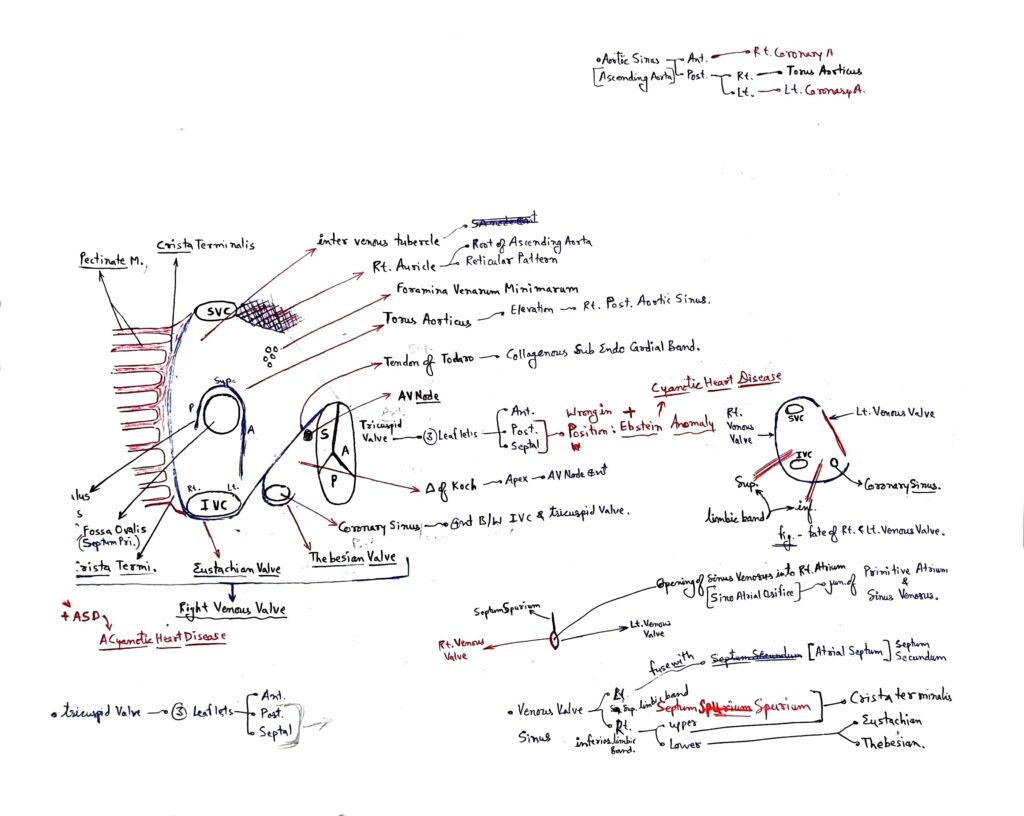Femoral nerve
Chart Highlights- Femoral nerve is divide into two division, anterior and posterior division. A. Anterior division- 1. Nerve to sartorius 2. Cutaneous nerve (medial and intermediate) B. Posterior division- 1. Rectus femoris (RF)2. Vastus medialis (VM)3. Vastus intermedius (VI)4. Vastus lateralis (VL)5. Saphenous nerve NOTE : All nerve to vastus (VL, VM, VI) supplies to
Right atrium
Diagram Highlights- 1. Right venous valve 2. Left venous valve 3. Crista terminalis 4. Eustachian valve 5. Thebesian valve 6. Triangle of koch7. Torus aorticus (right posterior aortic sinus)8. Fossa ovalis 9. Ebstein anomaly
Femoral triangle, sheath and canal
Chart Highlights- 1. Femoral triangle 2. Femoral sheath – It is divided into three compartment (Lateral, intermediate and lateral)3. Femoral canal – It is the medial compartment of femoral sheath.4. Femoral ring – It is the base of femoral canal.
Femoral triangle, sheath and canal Read More »









